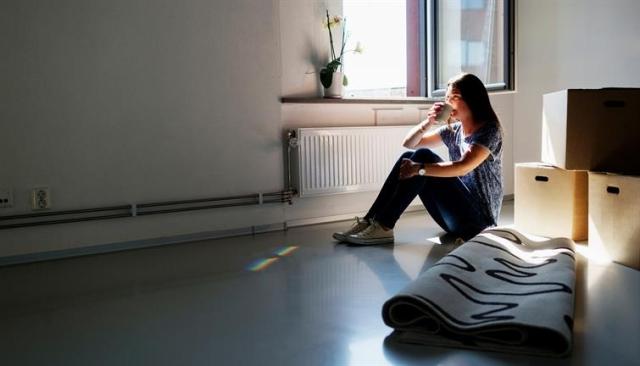While perusing your lease agreement, you might come across a section about your security deposit and the conditions under which it will be refunded. It will probably say something about the end of the lease and surrendering the premises in good condition, but with an allowance for “normal wear and tear.” Well … okay. But what does that mean, exactly? As you gaze around your apartment wondering about this scratch and that dent, it might be difficult to determine what’s normal wear and tear. Let’s explore this common phrase and what it might mean.
Wear and Tear, According to HUD
There’s no set definition for what normal wear and tear is, and it varies by state. Do some research into your state laws to see if you can gain some clarity there. Typically, normal wear and tear refers to the expected deterioration that happens over time. Yes, that’s still vague. Luckily, HUD provides some great examples of what is considered normal wear and tear. Let’s compare some of these. Keep in mind that these examples are all subjective. How your state and your apartment community define normal wear and tear could be different.
The Walls
If the paint on your apartment walls shows signs of age like fading, peeling, or cracking, HUD defines this as normal wear and tear. If you decided to paint your walls a different color (especially without the landlord’s permission), you do an unprofessional paint job, or you leave dozens of nail holes that need to be patched and repainted, that may not be considered normal wear and tear.
Perhaps you had some hanging plants and the frequent watering of those plants left water damage on the wall. This isn’t normal wear and tear, so you may lose at least part of your security deposit to cover the repair costs.
If your rental has wallpaper, it’s possible that a corner may curl along the seam, it might fade a little, or perhaps it could develop a slight tear. In most cases, this is considered normal wear and tear. But if you’ve ripped off a large swath of wallpaper or if you tried to remove it, that would be considered damage beyond normal wear and tear.
Crayon and marker scribbles on the walls would not be considered normal wear and tear, so if your child turned the dining room wall into an art gallery, congratulations on your budding Picasso, but that could cost you when you decide to move out.
The Floors
Over time, normal traffic patterns through your apartment may cause the carpet to wear down a little. That’s normal wear and tear. But if your pet had accidents or your fish tank leaked on the carpet, that is damage beyond normal wear and tear. Holes, stains, and burns are also considered damage. That red wine stain on the carpet could cost you when it is time to move out.
If you have wood flooring, some scuff marks are considered normal wear and tear. But if you’ve gouged your wood floors or if there are excessive scratch marks from your pet’s nails, you’ve gone beyond normal wear and tear.
In the Kitchen
Appliances are expected to show some age over time. If the gaskets are worn on your refrigerator doors, that’s considered normal. But if you put metal or glass into the garbage disposal and damaged it, that wouldn’t be considered normal wear and tear.
In the Bathroom
Normal wear and tear in the bathroom could consist of things like a rusty shower rod, a loose tile, or a door sticking a bit due to humidity. You may have some difficulty getting your security deposit back, however, if there’s mold because you didn’t open a window or use the vent. If the mold is the result of inadequate ventilation (your bathroom doesn’t have a window or the vent fan doesn’t work properly), then the landlord could be responsible.
If you crack a tile, that’s different than if it comes loose on its own. Perhaps you didn’t clean your shower very often and mold developed in the grout. This isn’t normal wear and tear, mainly because it could have been prevented.
Windows and Fixtures
Things that wouldn’t be considered normal wear and tear, according to HUD (see Appendix 5C), include broken windows, broken doors, missing fixtures, missing or bent shower rods, and torn or missing lamp and window shades. If you removed any of the original fixtures, window coverings, or lamp shades, locate the originals (hopefully you saved them) and put them back.
If a window or the ceiling cracks due to a settling of the foundation, that would be considered normal wear and tear, rather than damage you caused. Structural repairs will likely be handled by the landlord and shouldn’t impact your security deposit.
Getting Your Apartment Move-Out Ready
Before you move out of your apartment, you’ll likely have a walk-through with your property manager or landlord. If you had a walk-through when you moved in, your landlord may compare the condition from that walk-through to its current condition. Before the walk-through, you’ll want to try and get your apartment as close to that original condition as possible.
Following in the footsteps of vagueness around the definition for “normal wear and tear,” most state laws allow the landlord to withhold amounts from the security deposit for repairs that are deemed “reasonably necessary” to restore the property to its original condition (the way it was when you moved in). What is “reasonably necessary” could be different depending on where you live, so it’s a good idea to restore your apartment as close as you can to its original condition.
If you took photos and videos during your move-in walk-through, review these now. You may spot things you forgot about, especially if you’ve rented for more than a year. Perhaps you removed the shades or changed the pulls on the kitchen drawers. It will also help you to remember if that scratch was on the floor when you moved in or if you caused it somehow. Now that you have a clear understanding of what you want the apartment to look like, it’s time to start cleaning and repairing. Your mission, should you choose to accept it, is to get your apartment looking as close as possible to those “before” photos.
How to Deep Clean Your Apartment
Start by cleaning your apartment top to bottom, including the ceiling fans, the range hood, and the grout in the bathroom. Pay special attention to the appliances. If you never cleaned the oven or the refrigerator, now is a good time to do it. Consider cleaning or replacing the drip pans on the stove. Next, try to undo as much damage as you can. This includes filling holes, removing stains, and fixing scratches and dents. If there is damage beyond your abilities to repair, inform the landlord or property manager of these issues before you move out. While you will likely still be charged for the repairs, being honest about it could help you get at least part of your security deposit back.
While normal wear and tear is to be expected, a good rule of thumb is to try and erase any damage you directly caused. So yes, those stove burner drip pans may look a little less shiny after a year or more of cooking. That’s due to normal use. But if your attempt at baking a strawberry pie resulted in a burned mess that still mars the bottom of the oven, you’ll want to make sure all signs of that disaster are removed.
Finally, make sure you leave the apartment empty — as empty as it was when you moved in. While trash or old furniture left behind isn’t damage, it will have to be removed. If the property manager must hire someone to remove trash from your apartment, that fee will likely come out of your security deposit. When moving out of your apartment, try to follow the camping slogan and “leave no trace.”
If you still have questions about what might be considered normal wear and tear, be sure to ask your property manager or landlord. They can give you a better understanding of what they want to see at the walk-through. If you are still in the planning phase of your move, Apartments.com has everything you need to find your next apartment, including virtual tours and online applications. You can clean your apartment while searching for a new one! How’s that for multi-tasking?






